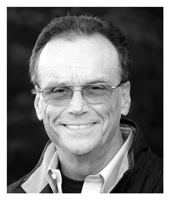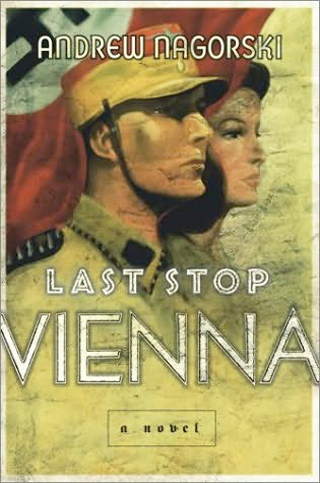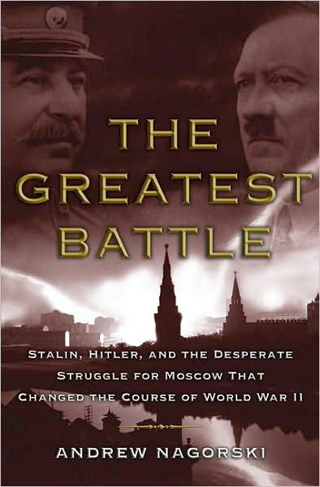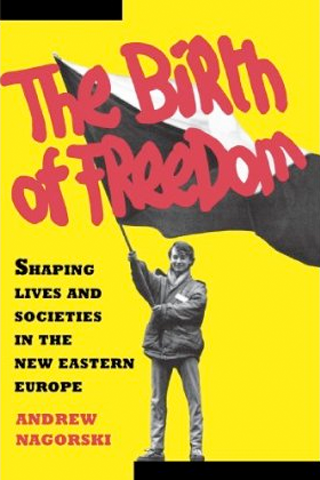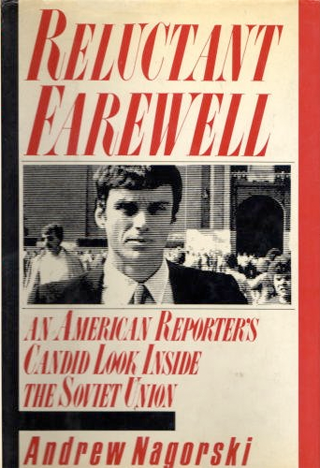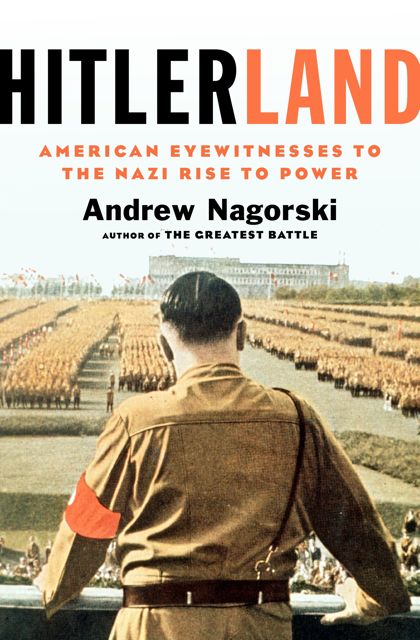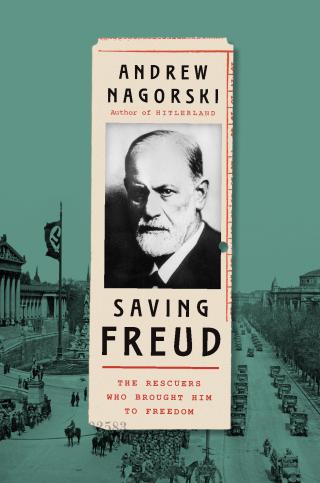Andrew Nagorski is an award-winning journalist and author who spent more than three decades as a foreign correspondent and editor for Newsweek. Nagorski started working for Newsweek Internationalin 1973 as an associate editor. He later served as assistant managing editor and Asian regional editor, and he then became Newsweek's bureau chief in Moscow, Warsaw, Bonn, and Berlin. From 2000 to 2008, Nagorski served as senior editor for Newsweek International. In addition, Nagorski has worked as a senior associate at the Carnegie Endowment for International Peace in 1988 and as adjunct professor at Bard College's Center for Globalization and International Affairs. Nagorski was also vice predisent and director of public policy at the EastWest Institute from 2008 to 2014. He is a member of the Council on Foreign Relations and the author of several books, including the highly successful Hitlerland: American Eyewitnesses to the Nazi Rise to Power.
The following exchange will focus on Nagorski’s new book The Nazi Hunters (Simon & Schuster, 2016).
***
Dear Mr. Nagorski,
Reading the fascinating stories featured in your book, it seems that the men and women known as Nazi Hunters were a pretty varied group of people rather than a tight-knit fraternity united in the name of one cause. As you put it:
Those who have attempted to bring the murderers to justice have been loosely labeled as Nazi hunters — but they have not been anything like a group with a common strategy or basic agreement on tactics. They have often been at odds with each other, prone to recriminations, jealousies and outright rivalries, even as they pursued the same goals.
My introductory question:
What would you like your book to teach your readers about this remarkable group individuals and their internal and external struggles: what are the main misconceptions about them and what are the main lessons that have been ignored?
Yours,
Shmuel.
***
Dear Shmuel,
First of all, the efforts to bring Nazi criminals to justice might have ended with the Nuremberg and other trials right after the war if it were not for these Nazi hunters. Most Germans and Austrians were only too eager to wrap up this process since many of them were still in denial about the scale of the horrors that had been carried out in their name. And the victors quickly lost interest in the pursuit of justice once they became preoccupied with the Cold War.
I was fascinated that, at a time when much of the world was only too eager to forget about the past, this relatively small group of people known as Nazi hunters dedicated their lives to this endeavor. Because of their efforts, we now know as much as we do about the Holocaust and other crimes of the Third Reich—and even the most recent trials of aging former Auschwitz guards have continued to play a vital educational role.
There were two main types of Nazi hunters: those who operated in an official capacity as investigators and prosecutors, and those who operated on their own, in effect as freelancers, seeking to pressure governments to act.
The most famous hunter in that latter category was Holocaust survivor Simon Wiesenthal in Vienna. He died in 2005, but I had interviewed him often. He was a fascinating, complex and controversial character, with many impressive accomplishments. But his critics accused him of hyping his role in the capture of Adolf Eichmann and other war criminals.
Plenty of books and movies blurred the line between fact and fiction about Nazi hunters, particularly in portraying Wiesenthal. Some of them were pure fiction. One of the most popular hits was The Boys from Brazil, a thriller turned into a blockbuster film about a Wiesenthal-like character personally tracking down Josef Mengele, Auschwitz’s “Angel of Death.” The two then face off in a life-and-death confrontation on a farm in Lancaster, Pennsylvania. Of course, nothing like that happened, and the real Wiesenthal was not that kind of character.
Then there was Serge and Beate Klarsfeld, the French-German couple who were responsible for some of the most daring—and seemingly reckless—actions. In 1968, Beate slipped by security guards and slapped West German Chancellor Kurt-Georg Kiesinger who had been a member of the Nazi Party. Serge stuck an unloaded gun between the eyes of the former chief of the Gestapo in Paris, Kurt Lischka. Those were meant to be symbolic gestures, but they could have ended very badly.
I was equally intrigued by some of the people who were working in official capacities and are often overlooked. For instance, at age 27, Benjamin Ferencz was the chief prosecutor in what the AP called “the biggest murder trial in history”: the Nuremberg trial of the commanders of the Einsatzgruppen, the special squads that conducted mass killings of Jews, Gypsies and others on the Eastern Front before the killings were shifted to the gas chambers of the camps. When I interviewed Ferencz, who remains incredibly spry even in his 90s, it was clear that the trial would never have happened if he hadn’t insisted that the newly discovered evidence about those killings had to be acted on.
Remember the old question: Does history make the man or does the man make history? In the case of the Nazi hunters, the men and women made history, not the other way around.
Another example is Jan Sehn, a Polish investigative judge whose family was of German descent. He interrogated Auschwitz commandant Rudolf Höss before he was hanged, patiently coaxing a written confession from him that was published as his autobiography. It is one of the most chilling documents of the Holocaust.
Returning to the subject of myths, the Israelis generated plenty of them as well. One of the most persistent was that they were on the trail of Nazis everywhere after the war, seeking vengeance. Of course there was the spectacular kidnapping of Eichmann in Buenos Aires in 1960, but, as I explain in my book, this was far more the exception than the rule. In fact, when I interviewed Rafi Eitan, the Mossad agent who was in charge of the commando unit that seized Eichmann, he stressed how the new state of Israel had to focus on its own survival early on and how reluctant his superiors were to expend much time or energy on the hunt for Nazi war criminals. The Eichmann case had to almost fall into their lap before they took action on it.
What really brought that point home was when Eitan described how he first set foot in West Germany as a young Mossad agent in 1953. I was certain he was about to tell me something about his hunt for Nazis. In fact, his trip had nothing to do with that. As he explained, his mission was to meet with the Mossad agents charged with monitoring the Jews arriving from Eastern Europe and the Soviet Union who were then proceeding to Israel. The new state needed the immigrants, but also knew the KGB and other East bloc intelligence services were planting agents there who would provide information that would be useful to the Kremlin and its Arab allies. Nazi hunting would have to wait.
Still, the Israelis, like Wiesenthal, could take satisfaction from the fact that some of the Nazi fugitives—even those who, like Mengele, got away—came to believe that the mythical avengers really were hot on their trail all the time. At least that meant they did not live out their final years in peace. Perhaps that provided some measure of justice.
The Nazi Hunters
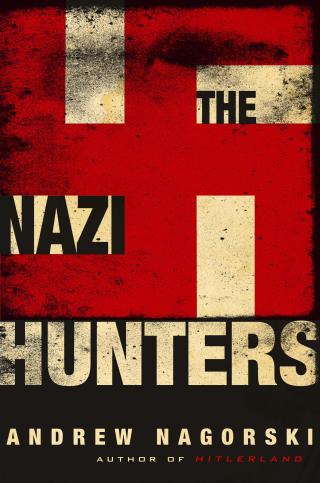
More than seven decades after the end of the Second World War, the era of the Nazi Hunters is drawing to a close as they and the hunted die off. Their full saga can now be told.
